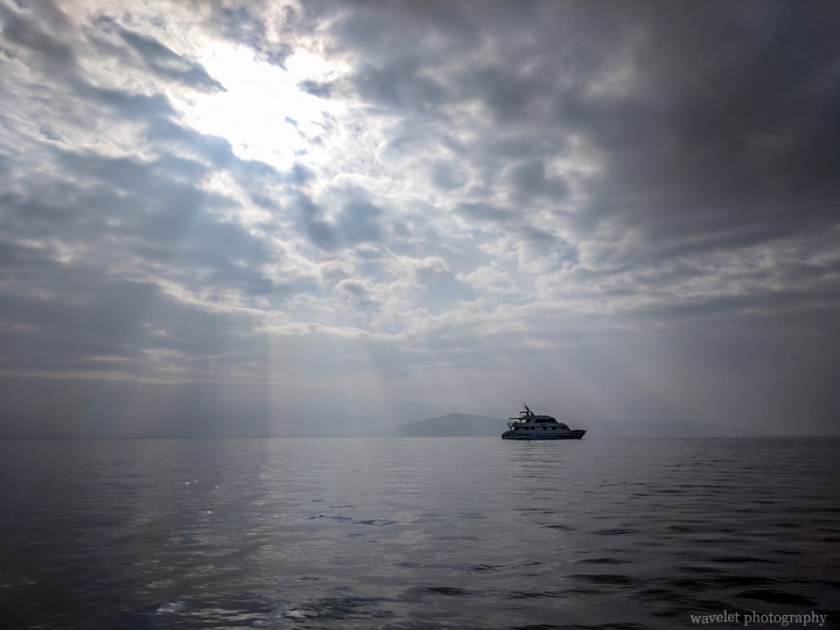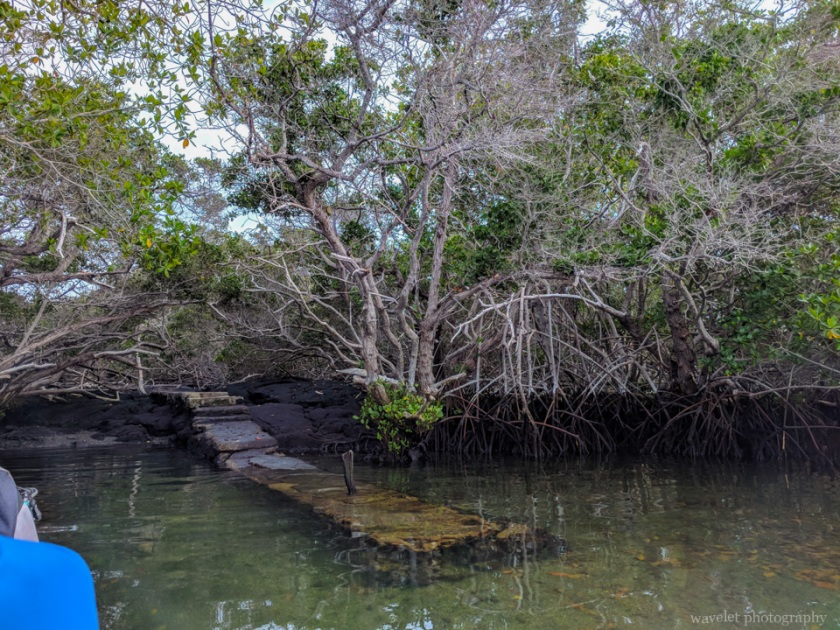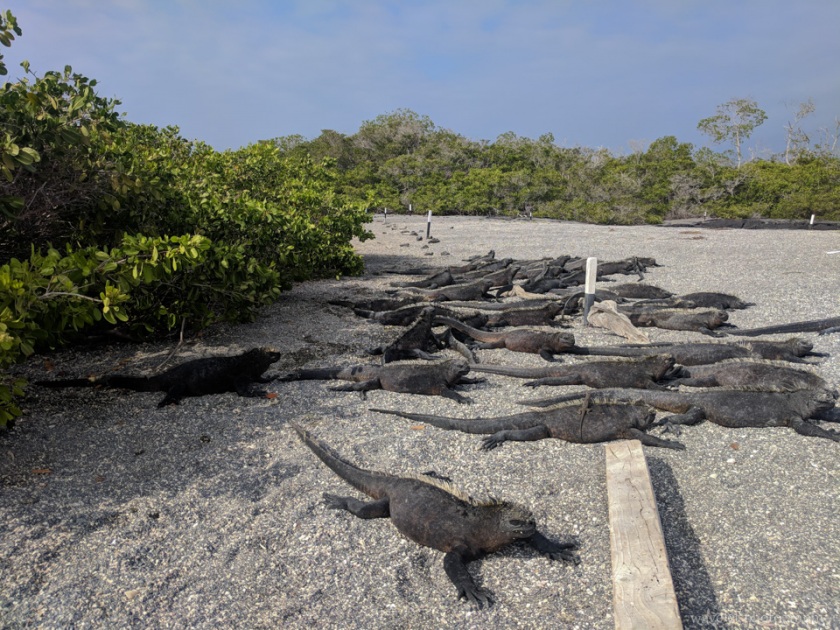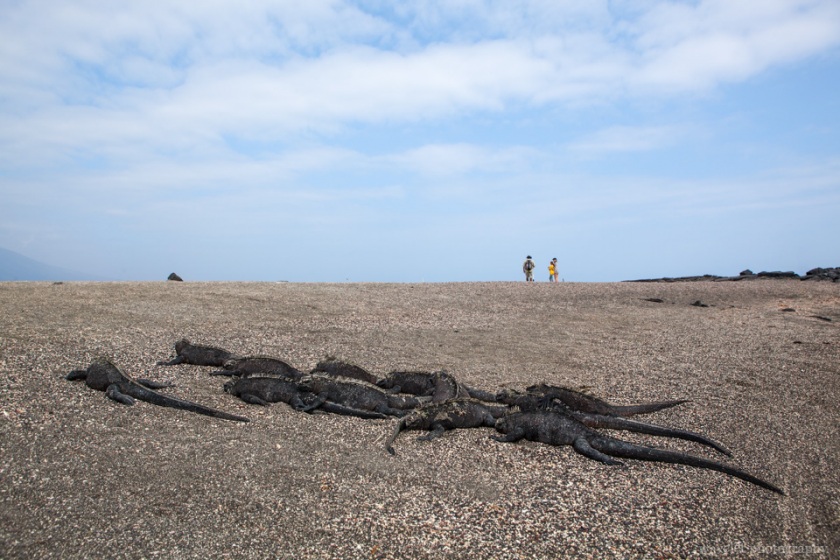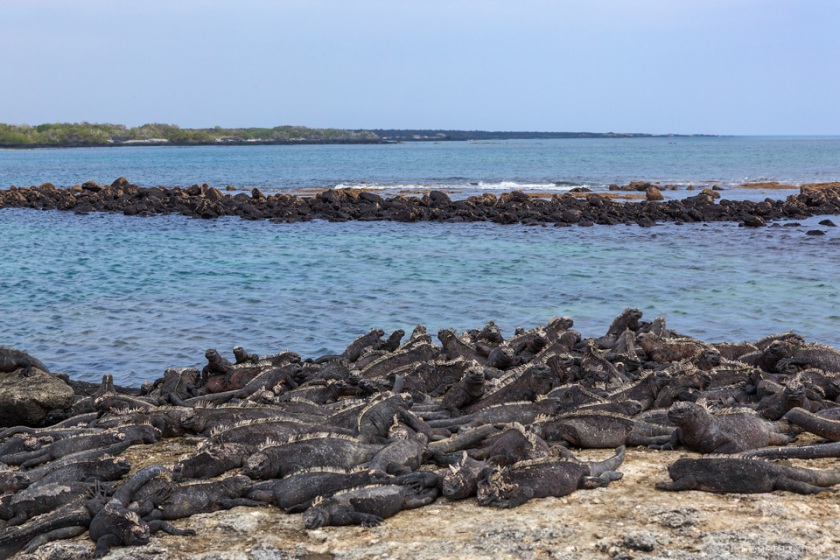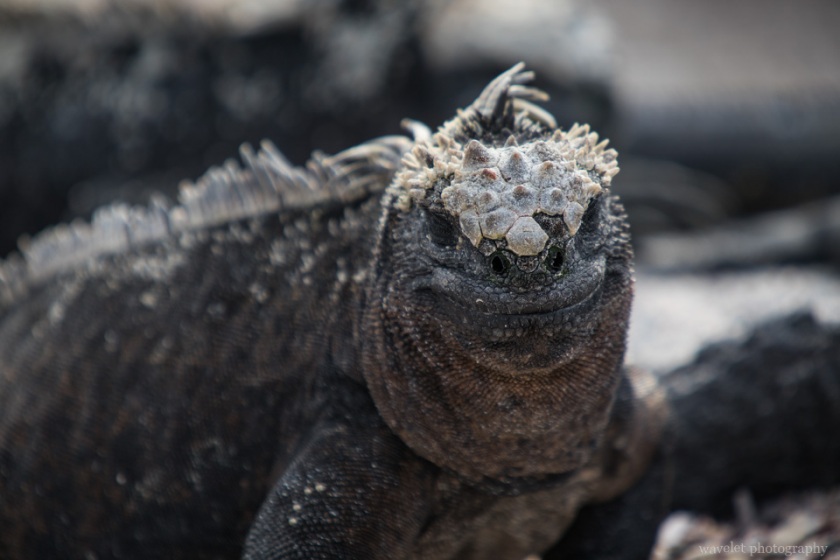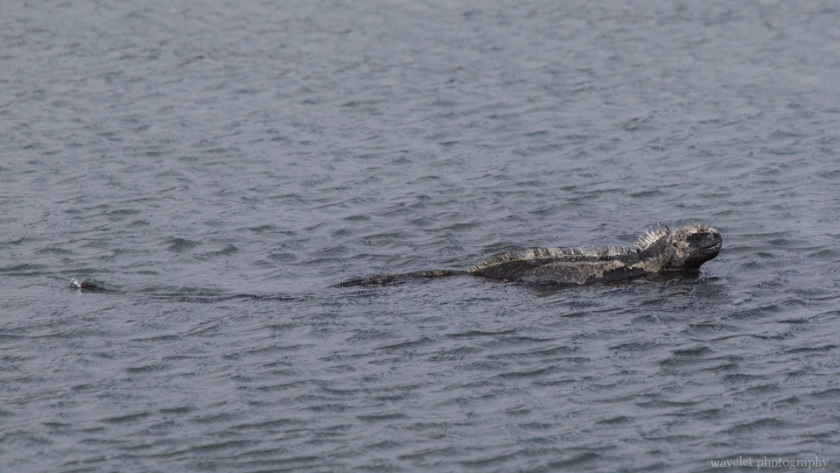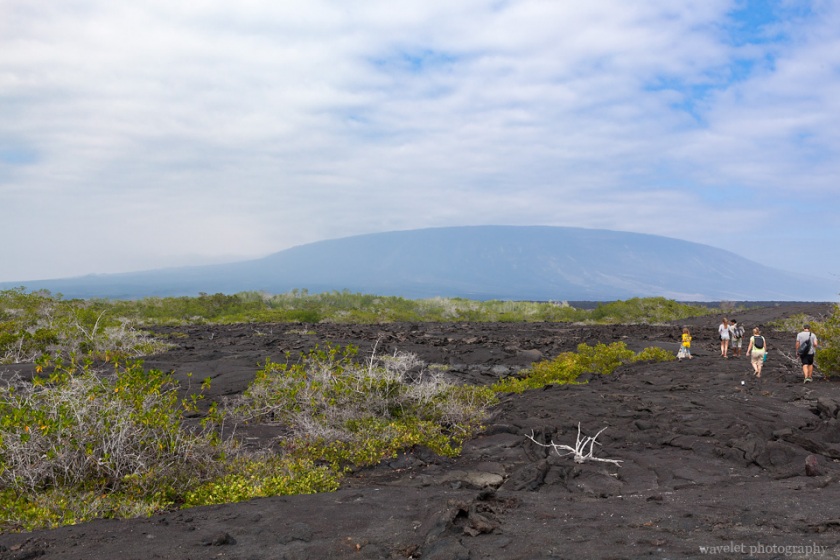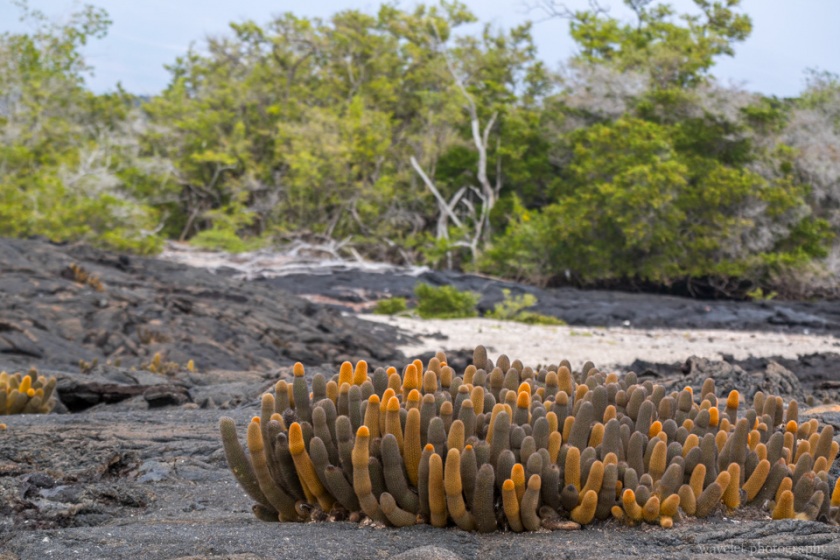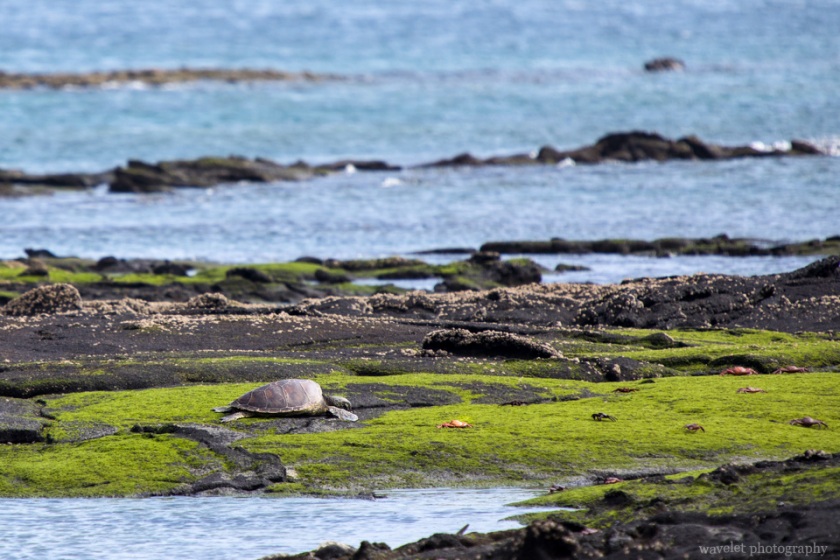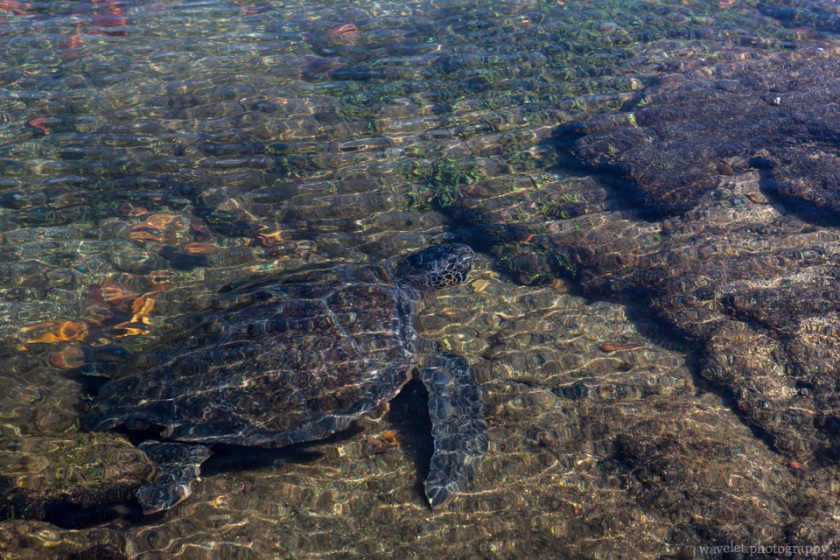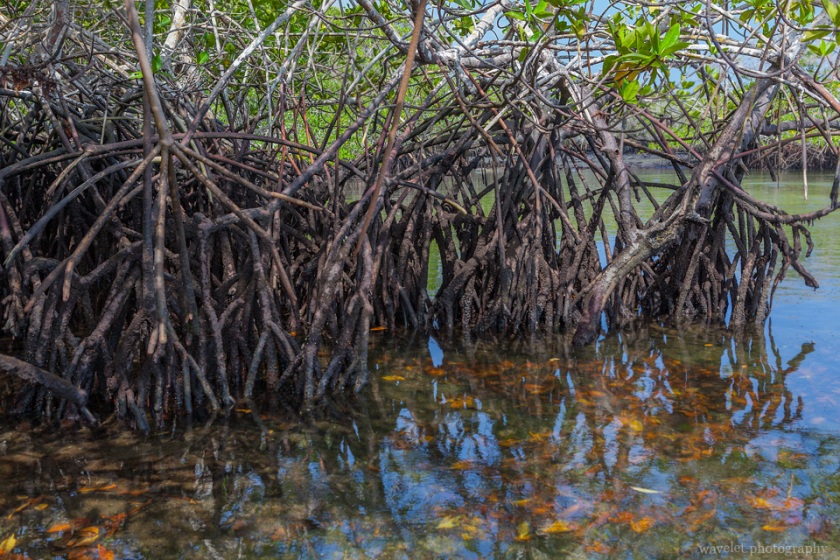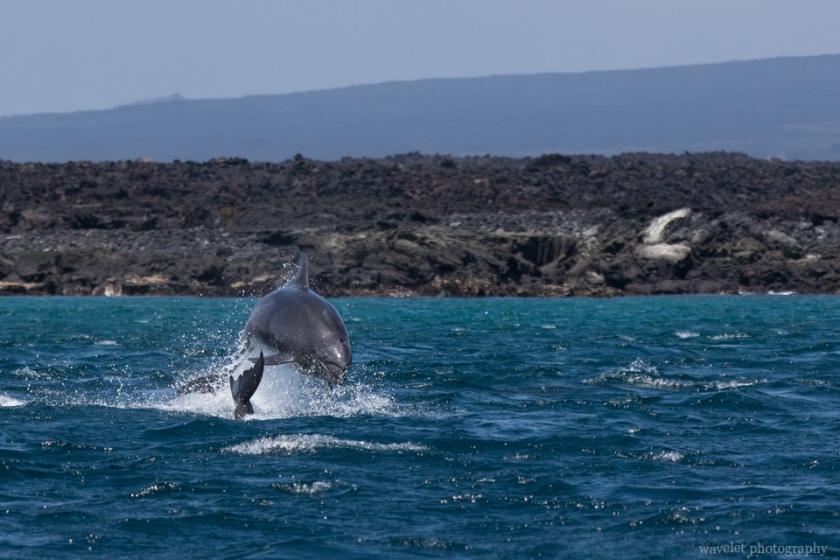2018.7.2
In the morning, the boat was moored in the calm water near Punta Espinoza. The sun was shining through the dense clouds, adding a sense of sanctity.
There is a section of stone stairs for boats to dock at the Punta Espinoza. Fernandina Island’s volcano is highly active, with La Cumbre had erupted the year before we arrived and again in January 2020. Punta Espinoza is probably the only place where visitors can board the island. Because there have been no humans living on the island, Fernandina is also the only island free of invasive species.
The volcanic rocks run from the foot of La Cumbre to the sea, with a sandy beach in between. Large gatherings of marine iguanas could be seen everywhere, some of them occupying the paths marked out for visitors to. We had to pass by carefully, not daring to disturb these little sunbathing dinosaurs.
If you looked closely, you’d find that some marine iguanas nod their heads and spray something between their nostrils from time to time. It turns out that marine iguanas go down to the sea to feed on moss and bask in the sun on the shore, and over time, salt from the seawater will gather in their bodies. Like other marine reptiles, there is a gland near the nasal cavity of marine iguana that can filter the salt in the blood and then discharge it from the nostrils to maintain the balance of salt in the body. The sprayed salt falls on the top of the marine iguana’s head, just like with a white hat, which is very comical.
The skeletons of dead marine iguanas can be seen on the beach. In addition to the change of body form, marine iguanas have a special skill of adapting to the environment. In the years when the El Niño phenomenon is severe, the marine iguanas have less food because of the increase in seawater temperature. If the El Niño lasts for a long time, it will cause a large number of marine iguanas to die. At this time, the marine iguana will not only reduce feeding and weight, but even shrink the length of its body by more than 20% until the water temperature returns to normal and the food is sufficient. Such a process will happen many times in the life of a marine iguana.
Fernandina Island is covered almost entirely with volcanic rock from La Cumbre volcano to the sea. Except for the mangroves on the beach, only the lava cactus can take root from the barren volcanic rock.
We walked along the shoreline to a small bay surrounded by mangroves. The narrow bay extends deep into the land, and the water is shallow and crystal clear. This is a quiet and secluded place. The calm waters also attract marine animals to inhabit here. Several sea turtles can be seen here and there. Some were crouching on the shore, while others were crawling in the water very close to us.
Back on the yacht, just after a short rest in the room, we heard the crew calling everyone outside the cabin door. It turned out the crew discovered a school of dolphins passing by not far from us. Marco and the crew decided to go after the dolphins. We put on the life jackets and boarded the zodiacs, which accelerated to the direction of the dolphins.
Within minutes, we caught up with the dolphins. It was definitely the most spectacular scene we have ever seen. We were surrounded by nearly 100 dolphins and sea lions speeding forward with us. Usually two or three dolphins were swimming side by side, riding the waves, playing and cheering. They burst out of the sea, drawing a beautiful arc, and then submerged in the water.
After about 15 minutes, the dolphins swam away. After the quiet and calm time around the shallows water of the bay, we also experienced the excitement of chasing dolphins. What a good time in the morning!
